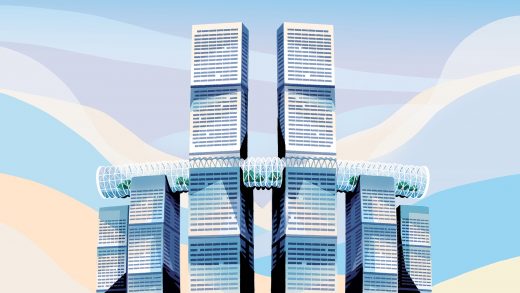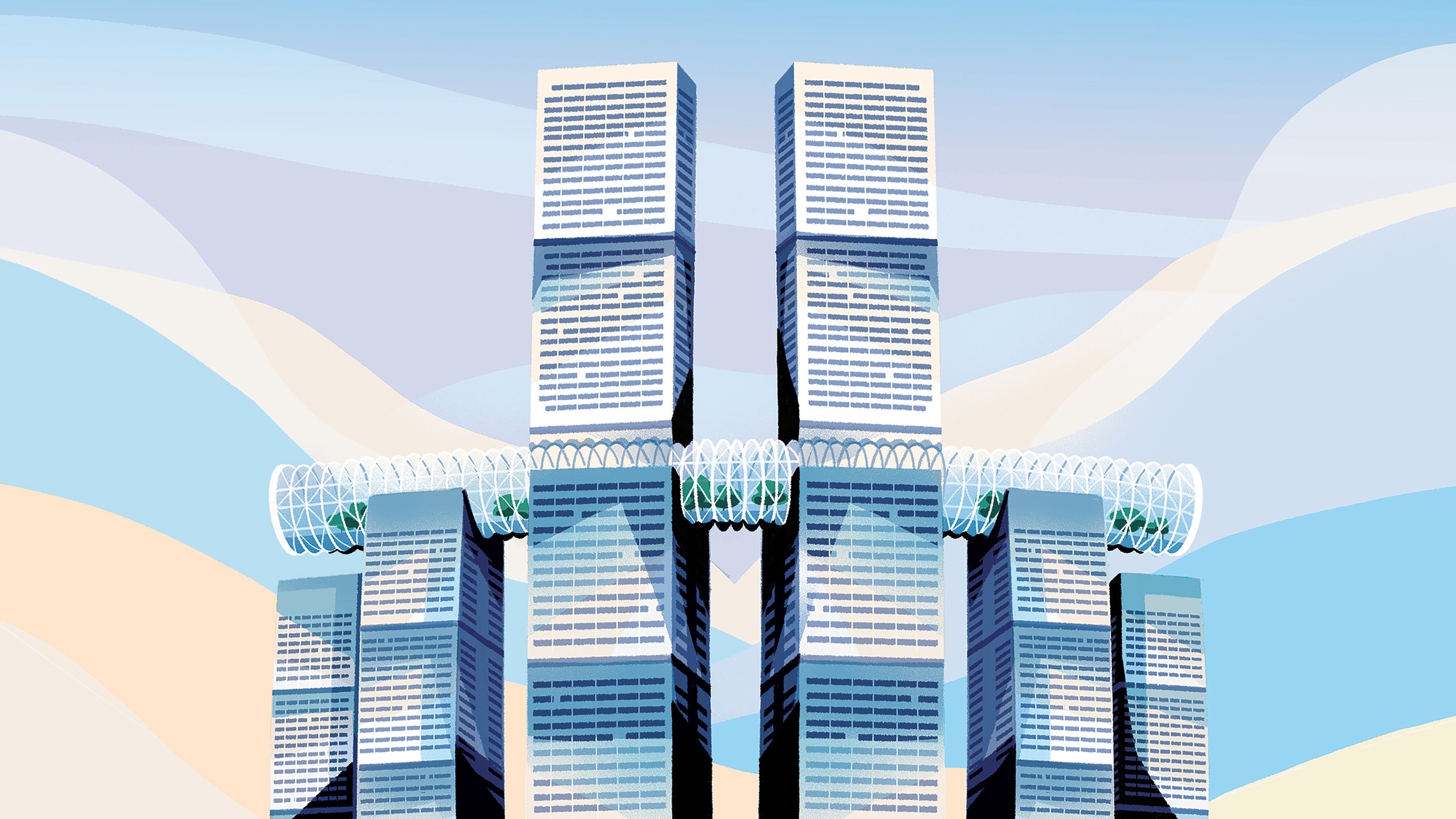A closer look at the world’s highest horizontal skyscraper
After eight years of design and construction, the eight-tower Raffles City complex, in the southwestern Chinese city of Chongqing, is a striking landmark, with its two tallest towers rising 1,150 feet. Up in the sky, but also on the ground, the building creates new connections for the city’s 31 million residents, a mix of publicly accessible spaces unlocking its long-obstructed waterfront.
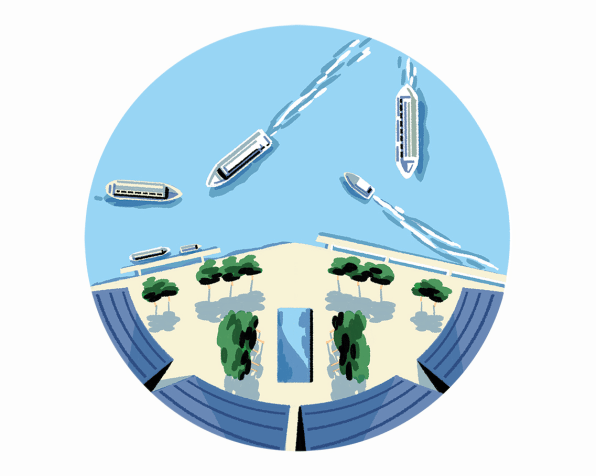
1. Waterfront Access
Located at the convergence of the Yangtze and Jialing Rivers, the skyscraper complex is set on a former traffic circle that blocked access to the waterfront for anyone who was not getting off a bus or ferry. Safdie Architects, renowned for founder Moshe Safdie’s cube-stacked Habitat 67, in Montreal, set out to restore that access. The design rerouted roads to make much of the nearly 1-million-square-foot site into a public park. A series of walkways and corridors draw pedestrians into the project and through the towers to reach the water’s edge.

2. Shopping With a View
The base of the complex houses a five-level shopping gallery with more than 230 stores. Because of the sloping site’s 115-foot elevation change, the shopping area is hidden, tucked mostly below the park and the residences, hotel, and towers. But even below pedestrian level, the mall complex features windowed corridors that keep the rivers in sight. “You’re always connected back to the water,” says architect Christopher Mulvey.
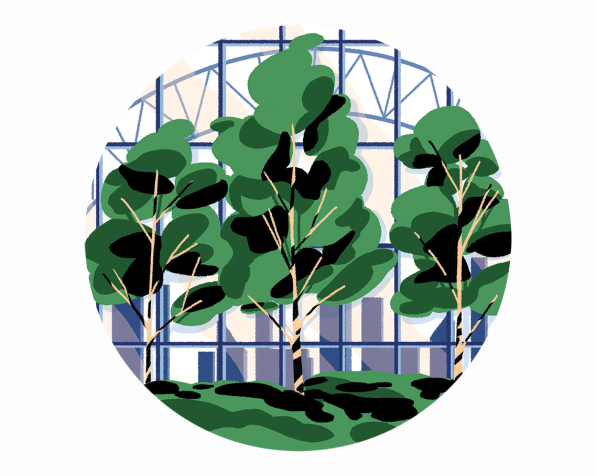
3. A Park in the Sky
The building also creates a bold new publicly accessible area high above the ground plane. Raffles City’s signature element is the 950-foot-long sky bridge that lies across the tops of its four central towers. It’s a rounded concertina-like structure that curves gently across the buildings to create commercial space in the sky.
Safdie Architects’ Chongqing sky bridge features an outdoor observatory, an exhibit curated by National Geographic, a garden with 110 full-size trees, two restaurants, a whiskey bar, and a nightclub. There’s also a private club where members can enjoy a 164-foot infinity pool. Lateral linkages reach out to the two adjacent towers and hold a hotel lobby and an access point for residents.
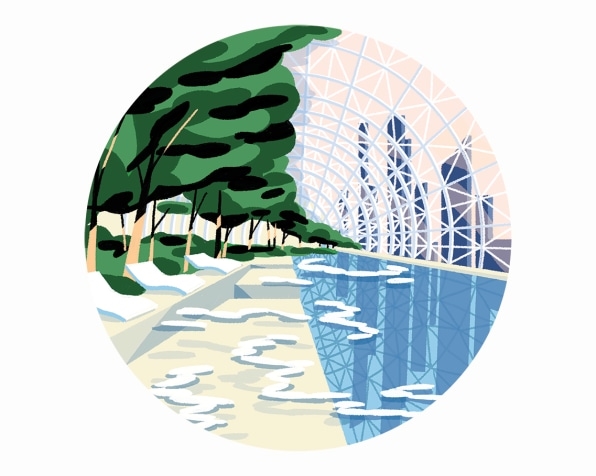
4. Engineered to Glide
This horizontal skyscraper is a feat of engineering. With 3,000 windows covering much of its elliptical ceiling, the sky bridge was designed to be strictly rigid. But like skyscrapers everywhere, the four towers it spans are subject to subtle movements caused by wind, temperature changes in building materials, and seismic forces underground. To keep the sky bridge from ripping apart, it’s only fixed permanently to one tower, with massive pendulum bearings allowing it to glide on the other three.
Inside, the sky bridge offers impressive views of the intense density of Chongqing, but also a unique interior world where the aerial promenade blends commerce, recreation, and spectacle. It’s an architecture that proposes a different kind of urban experience, Mulvey says. “It becomes less of a building and more of a city, more of a district.”
Fast Company , Read Full Story
(71)

